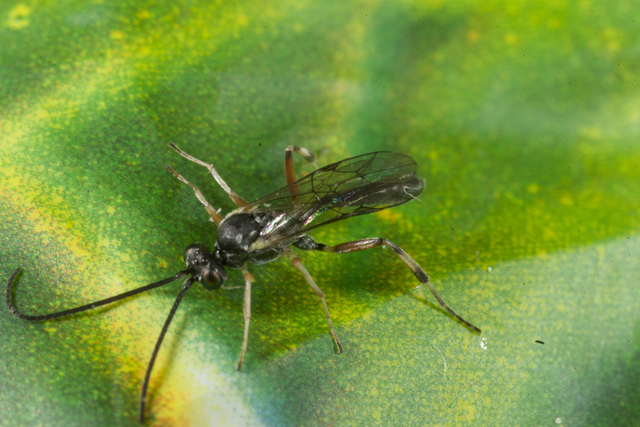
Grain growers will benefit from improved pest management strategies with the start of two new research projects focussing on beneficial insects in canola.
Grains Research and Development Corporation (GRDC) investments are being led by CSIRO and Cesar Australia, representing a collective investment of more than $12 million into understanding of the impact of beneficial invertebrates such as lady beetles, lacewings, spiders, carabids, predatory mites and parasitic wasps in canola.
Canola is subject to attack by at least 30 species of invertebrate pests, although this can vary between grain growing regions.
Over the last decade, the average annual loss from invertebrate pests in canola – using the management strategies available – was estimated to be $54 million.
GRDC western crop protection manager Georgia Megirian said sustainable production of canola required integrated pest management (IPM).
“Cultural practices and biological control are important aspects of IPM. Chemical interventions should be reserved as a last resort, applied only when necessary to prevent pests from reaching economically harmful levels,” she said.
“To date, synthetic insecticides have served as the primary means of controlling pests in canola within broadacre agriculture. Relying solely on this single method could escalate the risk of developing pesticide resistance and potentially harm the natural enemies of these pests.
“These new investments focus on enhancing the activity of beneficials in canola pests, addressing critical challenges such as market access, chemical regulation and the increasing threat of insecticide resistance in canola production.”
CSIRO is leading a five-year, $9.7m project on minimising damage of invertebrate pests in canola through a better understanding of the impact of beneficial insects, while Cesar’s four-year, $2.2m project will assess ecological and economic benefits of controlling aphid pests of canola with parasitoid wasps.
CSIRO principal research scientist Dr Sarina Macfadyen said beneficials could be instrumental in suppressing a range of pest populations and reducing the frequency and extent of damaging pest outbreaks.
“Globally, about 35 per cent of crops are lost to pre-harvest pests (weeds, disease and invertebrate pests) even with the use of pesticides. Specific crop loss data for Australian systems is scarce but we know the threat posed by invertebrate pests changes across the season, year, location and crop type,” she said.
“Australian canola producers have an amazing diversity of beneficials on their properties and in the broader landscape which could be used more strategically to reduce crop losses.
“To achieve this requires some new knowledge, practices, and tools to integrate beneficials into farming operations.”
Cesar Australia research scientist Dr Luis Mata said its project was aimed at gathering crucial information to bolster growers’ confidence in incorporating beneficial insects into their pest management strategies.
“Based on our consultations with industry experts and researchers, a critical question emerges: ‘If I use beneficial insects to manage pest X, what level of pest suppression can I anticipate, and how will it affect my crop?’,” he said.
“This project is designed to evaluate the effectiveness of aphid parasitoid wasps in managing aphid infestations without the use of insecticides. It will also compare the results with the pest control levels achieved through conventional approaches, such as the application of broad-spectrum insecticides.
“Through field-based research, the project will assess the biological, ecological and economic advantages of leveraging natural enemies for pest control. Importantly, the findings will be translated into practical, feasible, and economically beneficial management strategies and tools tailored for Australia’s grains industry.”
Both projects are now underway, with results anticipated to be available to Australian growers starting from 2027.








